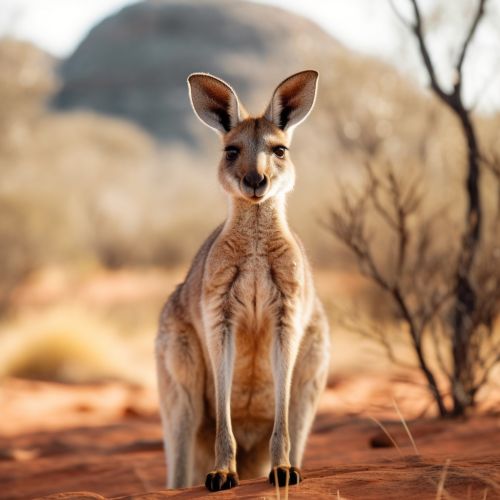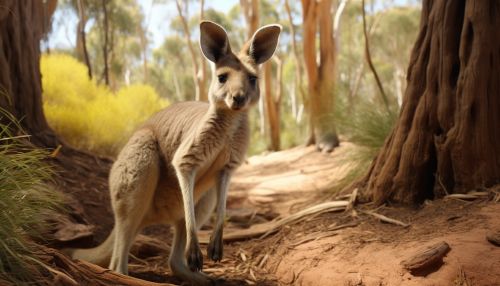Marsupials
Overview
Marsupials are a group of mammals primarily distinguished by their unique reproductive process, which involves giving birth to relatively undeveloped young that continue their development outside the womb, typically in a pouch. This group of mammals is most commonly associated with Australia and its surrounding islands, but species can also be found in the Americas, particularly South America.


Classification and Evolution
Marsupials belong to the infraclass Marsupialia, which is further divided into several orders, including Diprotodontia (kangaroos, wallabies, and possums), Dasyuromorphia (Tasmanian devils and quokkas), and Microbiotheria (the monito del monte). The evolutionary history of marsupials is complex and involves multiple migrations across continents.
Anatomy and Physiology
Marsupials exhibit a wide range of sizes and body structures, from the tiny honey possum to the large red kangaroo. Despite this diversity, all marsupials share certain anatomical features, such as the presence of a pouch in most species. Marsupials also have a unique reproductive system, with females typically having two uteri, unlike placental mammals.
Reproduction and Development
Marsupials have a unique mode of reproduction, which is characterized by a short gestation period followed by the birth of a relatively undeveloped young. The newborn marsupial, often referred to as a joey, then continues its development outside the womb, typically in the mother's pouch.
Behavior and Ecology
Marsupials occupy a wide range of ecological niches, from arboreal species like the koala and tree kangaroo, to terrestrial species like the Tasmanian devil and the bandicoot. Many marsupials are nocturnal and have developed adaptations to suit their specific environments and lifestyles.
Conservation
Many marsupial species are threatened by habitat loss, introduced predators, and other human-induced factors. Conservation efforts for these unique mammals include habitat protection, captive breeding programs, and research into their unique biology and ecology.
